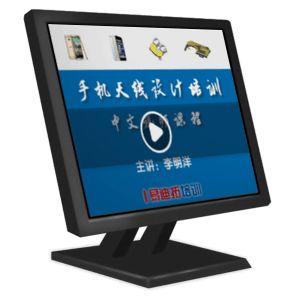- 易迪拓培训,专注于微波、射频、天线设计工程师的培养
如何设计便携式产品的电源系统 (三)
1.
Misinterpret the power requirements as stated by the system design engineer. Many of the requirements may be conditional upon some system state and if misrepresented could lead to an inadequate design. Before starting the design, carefully review the spec and if any ambiguities exist be certain to clear them up with the author before proceeding to a paper design. While the power supply engineer is generally kept abreast of power requirements and changes remember that power is not necessarily your company’s primary business and is often taken for granted or assumed to of little consequence in comparison to the final product.
Since this is a battery-powered device it is also important to know what functions, if any, are placed in standby as the battery nears discharge and how this influences the power supply design. If a flow diagram of the device operation, including that at varying battery states, does not exist, ask for one or draw one up and have the system architect approve it.
2.
Finalize a paper design until the power supply real estate allocations are firm. The information given is usually in the form of area but don’t forget to get the exact maximum allocated length, width and clearances around the board. The compact designs will use the bottom of the board for components and this dimension is as critical as the length and width allowed for the power supply. If the system is designed on a single board the supply is less likely to require connectors but keep these in mind as they can often use up precious board space.
3.
Overlook the hidden inefficiencies of the power train components. Intuitively, a physically larger inductor does not always have lower losses. Although the copper losses may decrease, the core losses will increase as a result of more magnetic moments being moved back and forth. Operating the inductor in continuous current mode can reduce core and copper losses but too high an inductance value can yield low output ripple voltage but at increased power loss. The MOSFET is often overlooked for gate losses in favor of a unit that has a low RDS(ON). Gate losses can be a significant contributor to overall inefficiency at light loads and should always be minimized. Shop for the MOSFET that has both low on losses and requires a low gate charge for enhancement. Keep the PCB traces as short and wide as possible to minimize voltage drops. Here is where multiple layers can add copper to reduce trace resistance.
4.
Spend extra $$ on shielded inductors when careful placement of this component may be all that is required to prevent noise from coupling into adjacent circuitry or causing emissions problems that prevent the system from meeting emissions standards. Most inductors, without noticeable increase in physical size, are available as shielded or unshielded and fit the same PCB footprint. Make sure you really need them before committing them to design. Don’t use electrolytic capacitors unless you are willing to accept field returns when the electrolyte dries out. Ceramic capacitors have a very low ESR and a good capacitance per volume ranking and should be used before tantalums.
5.
Depend on the controller to be or provide a turnkey solution. This is especially true if your expertise is in the digital and not the analog domain. Handheld, battery powered devices require multiple supplies and some means of recharging and monitoring the battery state. Using a single controller for each supply can be a difficult task and such an approach uses more real estate than a multi-channel controller. Don’t assume that the controller itself is power efficient just because it is intended for battery-powered applications.
Minimize the design and turn times by choosing a controller with as many channels and features you require integrated into a single chip. Controllers that are programmable or have programmable features get up and running quicker and lend themselves to changes when the market demands more features from your device.
About the author
George Hall is Staff Applications Engineer at Summit Microelectronics. He is responsible for supporting customers using Summit devices, evaluation kit design and new product definition. Before joining Summit, Mr. Hall was an applications engineer at Monolithic Power Systems. He has also held positions at Micro Linear Corporation, Micrel Semiconductor, Raynet, Computer Products, and General Electric. Mr. Hall has authored numerous application notes and holds a patent in phase-locking switched-mode power supplies. ghall@summitmicro.com
上一篇:利用MCU设计离线锂电池充电器
下一篇:提升可携式装置锂电池充电效率

